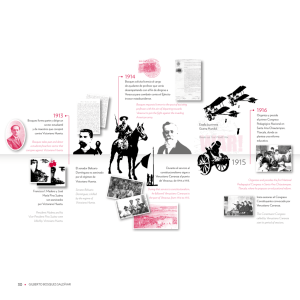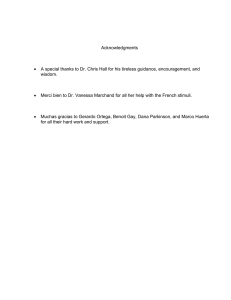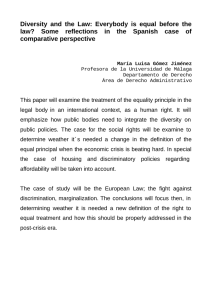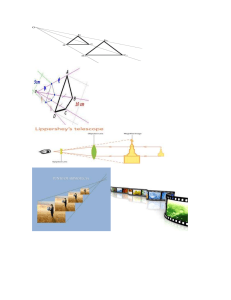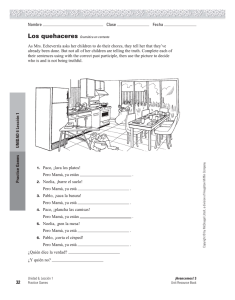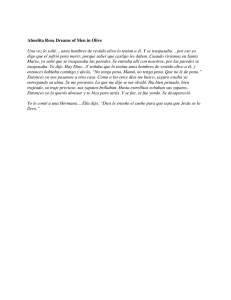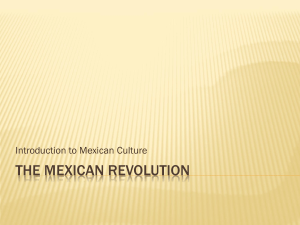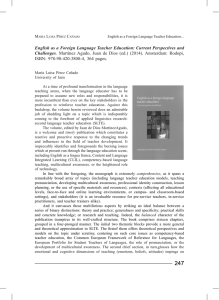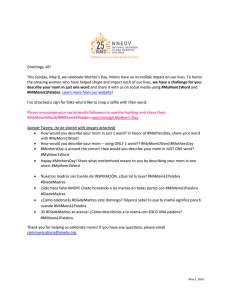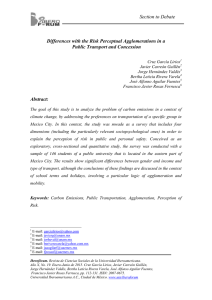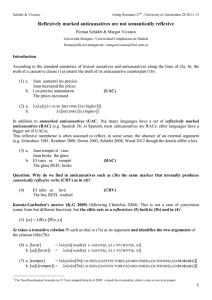Study Guide - Virginia Bonner
Anuncio
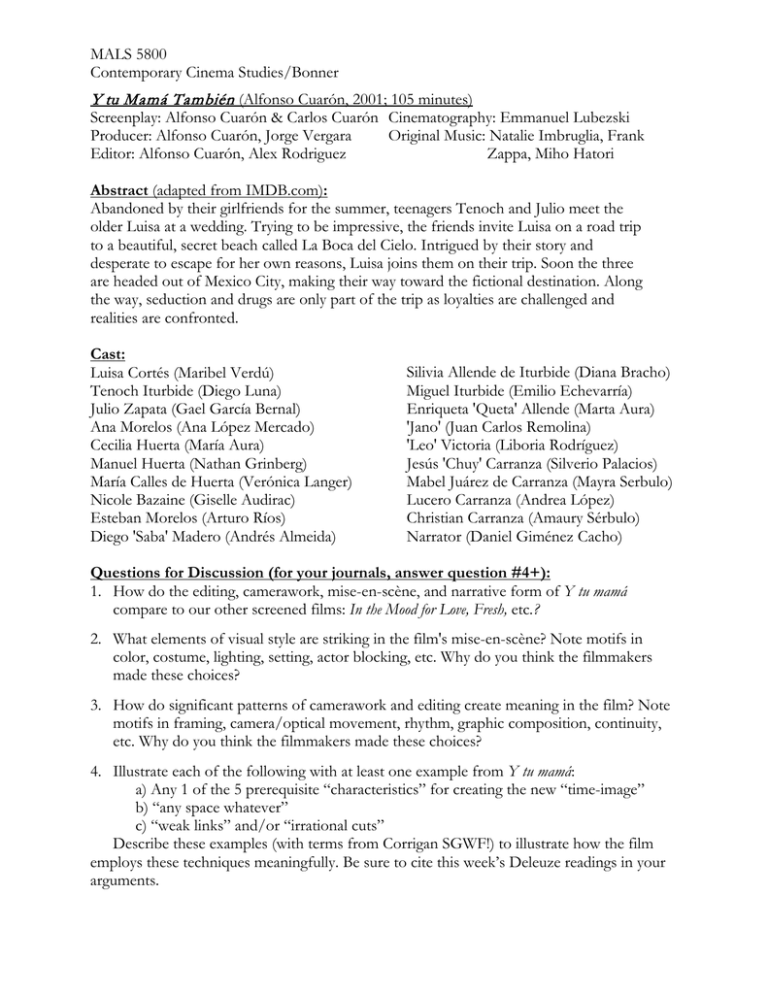
MALS 5800 Contemporary Cinema Studies/Bonner Y tu Mamá También (Alfonso Cuarón, 2001; 105 minutes) Screenplay: Alfonso Cuarón & Carlos Cuarón Cinematography: Emmanuel Lubezski Original Music: Natalie Imbruglia, Frank Producer: Alfonso Cuarón, Jorge Vergara Zappa, Miho Hatori Editor: Alfonso Cuarón, Alex Rodriguez Abstract (adapted from IMDB.com): Abandoned by their girlfriends for the summer, teenagers Tenoch and Julio meet the older Luisa at a wedding. Trying to be impressive, the friends invite Luisa on a road trip to a beautiful, secret beach called La Boca del Cielo. Intrigued by their story and desperate to escape for her own reasons, Luisa joins them on their trip. Soon the three are headed out of Mexico City, making their way toward the fictional destination. Along the way, seduction and drugs are only part of the trip as loyalties are challenged and realities are confronted. Cast: Luisa Cortés (Maribel Verdú) Tenoch Iturbide (Diego Luna) Julio Zapata (Gael García Bernal) Ana Morelos (Ana López Mercado) Cecilia Huerta (María Aura) Manuel Huerta (Nathan Grinberg) María Calles de Huerta (Verónica Langer) Nicole Bazaine (Giselle Audirac) Esteban Morelos (Arturo Ríos) Diego 'Saba' Madero (Andrés Almeida) Silivia Allende de Iturbide (Diana Bracho) Miguel Iturbide (Emilio Echevarría) Enriqueta 'Queta' Allende (Marta Aura) 'Jano' (Juan Carlos Remolina) 'Leo' Victoria (Liboria Rodríguez) Jesús 'Chuy' Carranza (Silverio Palacios) Mabel Juárez de Carranza (Mayra Serbulo) Lucero Carranza (Andrea López) Christian Carranza (Amaury Sérbulo) Narrator (Daniel Giménez Cacho) Questions for Discussion (for your journals, answer question #4+): 1. How do the editing, camerawork, mise-en-scène, and narrative form of Y tu mamá compare to our other screened films: In the Mood for Love, Fresh, etc.? 2. What elements of visual style are striking in the film's mise-en-scène? Note motifs in color, costume, lighting, setting, actor blocking, etc. Why do you think the filmmakers made these choices? 3. How do significant patterns of camerawork and editing create meaning in the film? Note motifs in framing, camera/optical movement, rhythm, graphic composition, continuity, etc. Why do you think the filmmakers made these choices? 4. Illustrate each of the following with at least one example from Y tu mamá: a) Any 1 of the 5 prerequisite “characteristics” for creating the new “time-image” b) “any space whatever” c) “weak links” and/or “irrational cuts” Describe these examples (with terms from Corrigan SGWF!) to illustrate how the film employs these techniques meaningfully. Be sure to cite this week’s Deleuze readings in your arguments.
